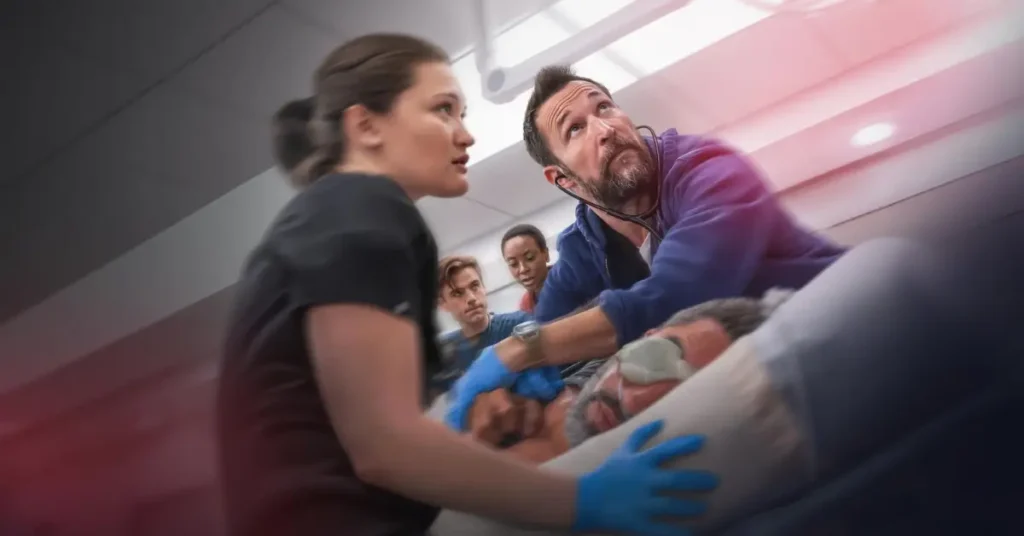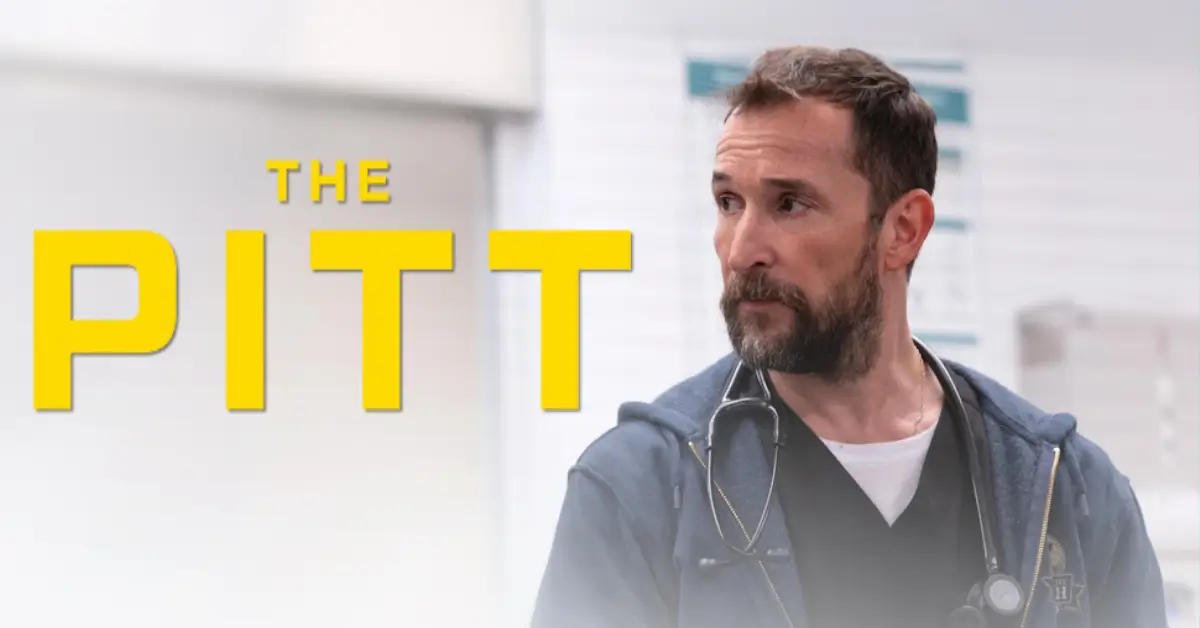The Pitt: Examining the Psychological Depths of Emergency Medicine Through the TV Screen
In the landscape of medical dramas that have captured our screens over the decades, The Pitt emerges as a groundbreaking addition that pushes the boundaries of the genre while offering an unprecedented window into the psychological realities of emergency medicine. This 2025 Max streaming series invites viewers to experience the raw emotional intensity of healthcare in a way that few shows have attempted before.
Thank you for reading this post, don't forget to subscribe!Basic Film Information
Title: The Pitt
Release Date & Production Year: 2025
Creator/Executive Producer: John Wells (renowned for ER and The West Wing)
Format: Streaming series on Max platform
Episodes: 15 episodes, each representing one hour of a continuous shift
Genre: Medical Drama
Setting: Emergency room in Pittsburgh
Notable Cast: Includes Ned Brower, a former drummer turned real-life ER nurse, as nurse Jesse Van Horn
Runtime & Rating: Likely 45-60 minutes per episode, rating not specified

Plot Summary: 15 Hours on the Front Lines
The Pitt offers a revolutionary narrative structure in medical storytelling the entire series takes place during a single, exhausting 15-hour shift in a Pittsburgh emergency room. Each episode represents one real-time hour of this continuous shift, creating an immersive experience that mirrors the relentless pace of emergency medicine.
Mental Health Themes
The series delves deeply into several psychological dimensions that are often glossed over in more conventional medical dramas:
- Burnout and Compassion Fatigue: Characters visibly deteriorate over the course of the shift, showcasing the minute-by-minute toll of sustained stress and emotional labor.
- Decision Fatigue: The series explores how the quality of medical decisions can be affected by the sheer volume of choices required in rapid succession.
- Trauma Processing: Healthcare professionals in The Pitt grapple with both immediate traumatic events and the accumulated weight of past experiences.
- Addiction and Coping Mechanisms: The show examines how some medical staff turn to substances or problematic behaviors to manage their stress.
- Grief and Loss: Characters navigate personal losses while simultaneously helping patients and families through their own grief.
- Work-Life Balance: The impossible tensions between professional responsibilities and personal needs are laid bare throughout the series.
By containing the narrative within a single shift, the series creates a pressure-cooker environment where these psychological elements intensify and interact in revealing ways.
Setting & Cinematic Techniques
Real-Time Storytelling
The Pitt employs a distinctive real-time narrative approach that distinguishes it from other medical dramas. This technique:
- Creates authentic tension as viewers experience the unrelenting pace alongside the characters
- Eliminates the typical time jumps that might otherwise provide emotional relief
- Allows for the gradual accumulation of stress and fatigue to be visibly tracked
Visual Immersion
The cinematography of The Pitt plays a crucial role in conveying the psychological experience of emergency medicine:
- Handheld Camera Work: Creates a sense of urgency and instability that mirrors the characters’ internal states
- Tight Framing: Close-ups capture micro-expressions and emotional responses that might otherwise go unnoticed
- Environmental Immersion: The camera rarely leaves the confines of the hospital, enhancing the feeling of being trapped in the high-stress environment
These techniques combine to create not just a visual representation of an emergency room, but an emotional and psychological one as well.
Acting & Character Portrayal
Authenticity Through Experience
The inclusion of Ned Brower a former drummer who became an actual ER nurse as cast member Jesse Van Horn represents a commitment to authentic portrayal rarely seen in medical dramas. This casting choice:
- Brings firsthand knowledge of medical procedures and emergency room culture
- Adds subtle authenticity to the physical movements and emotional responses of healthcare workers
- Helps ground the dramatic elements in real-world experience
Psychological Depth
Characters in The Pitt are portrayed with remarkable psychological complexity. Rather than falling into the trap of medical hero worship, the series shows:
- Flawed professionals making difficult decisions under impossible circumstances
- The psychological defense mechanisms employed to continue functioning during crisis
- Moments of both strength and vulnerability that humanize the medical staff
Mental Health Representation: Strengths & Weaknesses
Strengths in Portrayal
The Pitt offers several notable strengths in its representation of mental health challenges:
- Normalization: The series presents psychological struggles as an inherent part of emergency medicine rather than exceptional cases
- Process Over Event: By showing a continuous shift, the show highlights how mental health challenges develop incrementally rather than solely from discrete traumatic events
- Complexity: Characters demonstrate varied responses to similar stressors, acknowledging the individual nature of psychological coping
Potential Limitations
While the series generally handles mental health themes with care, potential limitations might include:
- The compressed timeframe, while creating dramatic intensity, may not fully capture the long-term nature of conditions like burnout
- The focus on a single shift might overlook the cumulative effects of career-long exposure to trauma
- The dramatic necessities of television could potentially heighten certain psychological elements beyond typical experience
Critical Reception & Impact
The series has garnered significant praise for its unflinching portrayal of the psychological demands placed on emergency medicine professionals. Critics and viewers have particularly responded to:
- The show’s willingness to present healthcare workers as complex human beings rather than idealized heroes
- Its realistic depiction of the minute-to-minute psychological resilience required in emergency settings
- The attention given to systemic factors that contribute to healthcare worker stress and burnout
Cultural & Social Impact
Highlighting Healthcare Worker Mental Health
At a time when healthcare worker burnout and mental health have become pressing public concerns, The Pitt contributes meaningfully to this conversation by:
- Making visible the often invisible emotional labor performed by medical professionals
- Challenging simplistic narratives about healthcare heroism that can inadvertently discourage honest discussions about psychological struggles
- Demonstrating how systemic pressures and institutional factors contribute to individual mental health challenges
Community Reflection
Set specifically in Pittsburgh, the series also explores how broader societal issues manifest in emergency medicine:
- Healthcare disparities based on socioeconomic factors
- The intersection of community challenges with individual health crises
- How local resources (or lack thereof) impact both patients and providers
Personal Reflection & Final Thoughts
What makes The Pitt particularly valuable from a mental health perspective is its commitment to showing both the costs and the rewards of emergency medicine. The series acknowledges the profound psychological toll of this work while also honoring the meaning and purpose that sustains many healthcare professionals through their most difficult shifts.
For viewers with connections to healthcare whether as professionals, patients, or family members the series offers a rare opportunity to see the complex emotional realities of emergency medicine represented with nuance and respect. For others, it provides an eye-opening glimpse into the psychological demands of a field that touches all our lives at vulnerable moments.
The show’s innovative format of a single shift told across 15 episodes serves as a powerful reminder that mental health challenges often unfold not in dramatic moments but in the accumulation of stressors over time a reality that applies far beyond emergency rooms.
Conclusion
The Pitt represents an important evolution in how medical dramas portray the psychological dimensions of healthcare. By combining innovative storytelling techniques with authentic medical input and complex character development, the series offers viewers an unprecedented look at the mental and emotional experiences of those who work on medicine’s front lines.
In an era when healthcare worker wellbeing has become a critical public health concern, The Pitt does more than entertain it contributes to a necessary conversation about the psychological realities of emergency medicine and the support systems needed to sustain those who provide it.
What are your thoughts on how this series portrays the mental health challenges in emergency medicine? Does the real-time format enhance your understanding of the psychological pressures faced by healthcare workers? Share your perspectives in the comments below.

